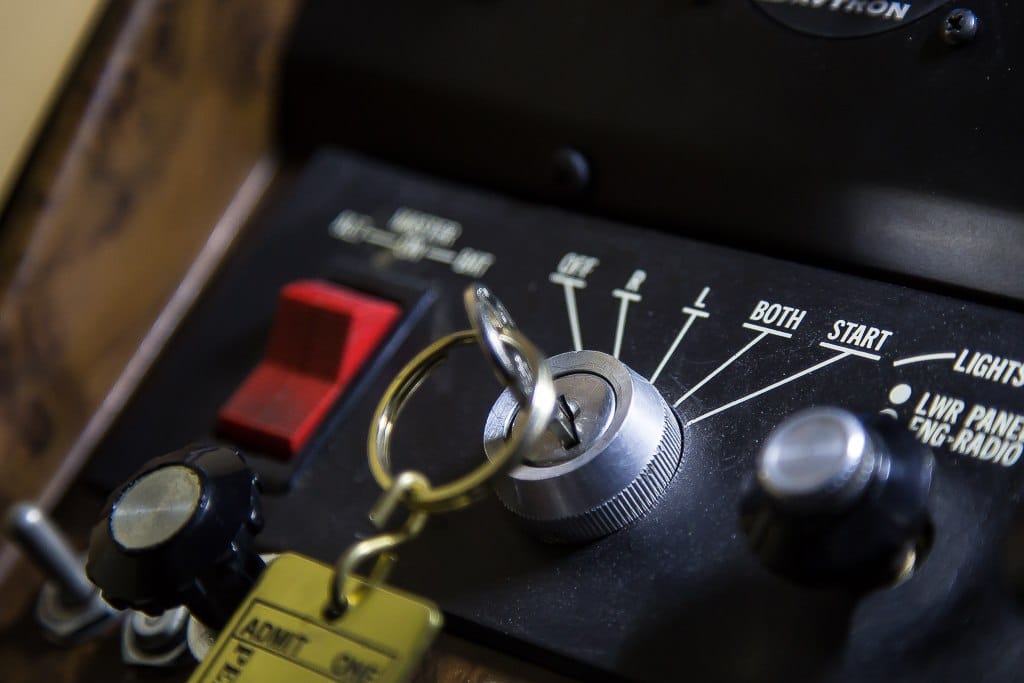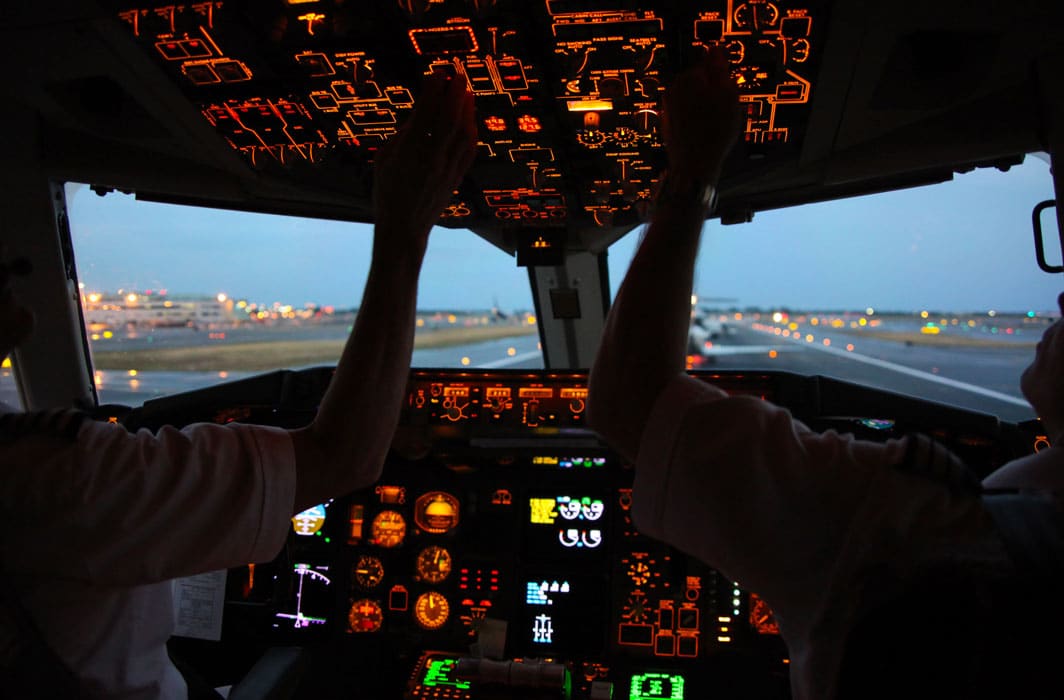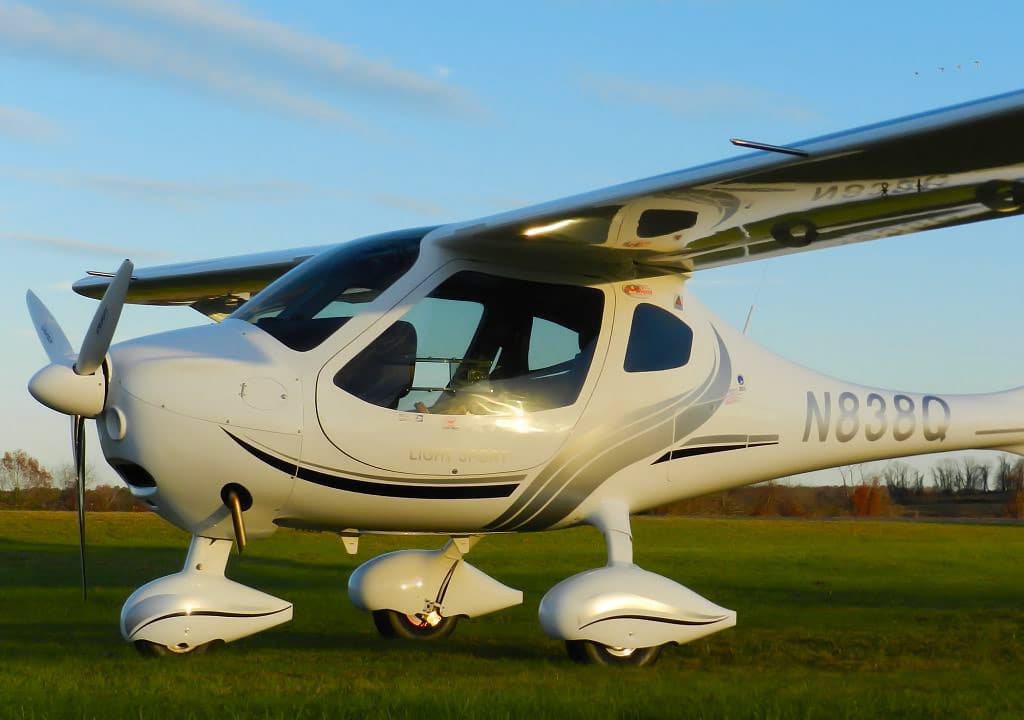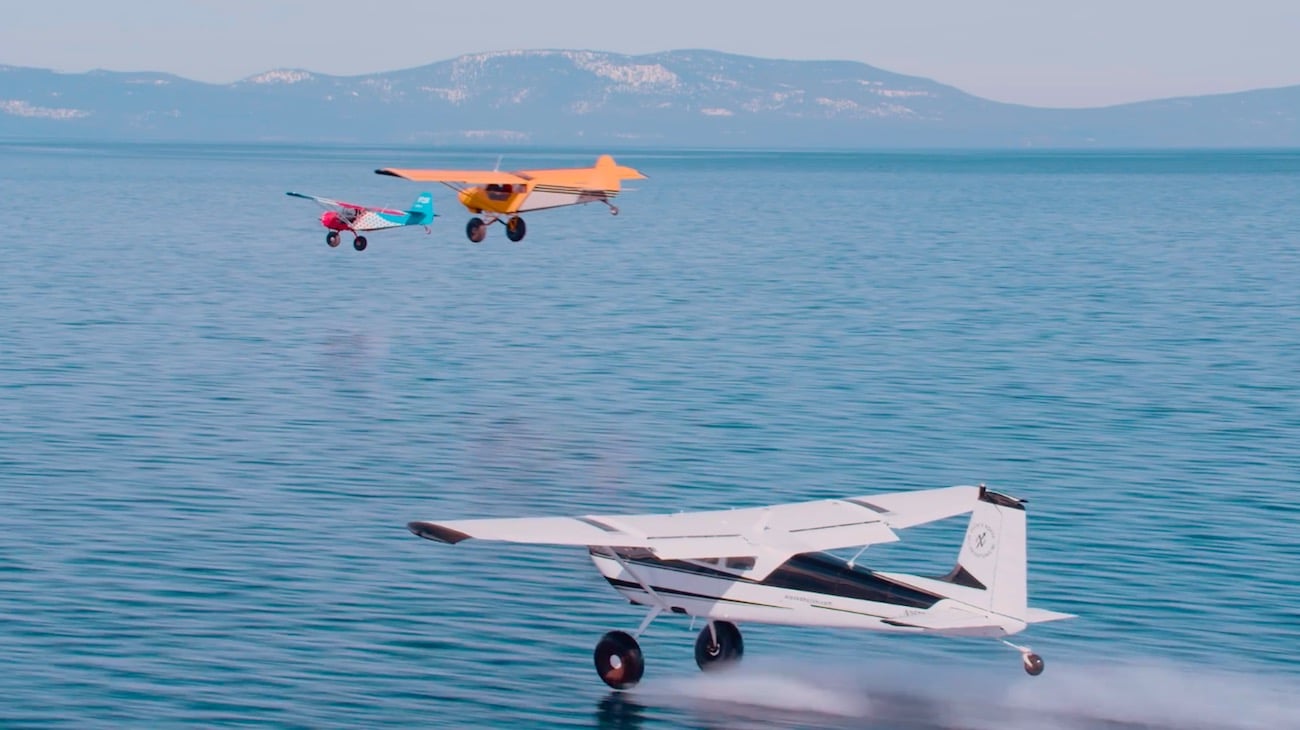FAA AD 2017-11-11, regarding NavWorx ADS-B units, goes into effect July 11, 2017.
As promised a few months ago, the FAA has now finally issued an airworthiness directive regarding certain NavWorx ADS-B units, which requires removing, disabling or modifying the unit. The FAA says the AD was prompted by what they see as an unsafe condition, where design changes resulted in the units in question broadcasting a Source Integrity Level (SIL) of 3 instead of its authorized SIL of 0. This could result in the possibility of the “unit communicating unreliable position information to Air Traffic Control and nearby aircraft and a subsequent aircraft collision.”
Last October, after publishing an NPRM (Notice of Proposed Rulemaking), the FAA received nearly 200 comments from both individuals and groups, including NavWorx, the Airplane Owners and Pilots Association (AOPA), Experimental Aircraft Association (EAA), and the Aircraft Electronics Association (AEA). With the issuance of the AD, the FAA took the time to respond, at length, to all the comments. However, after reviewing the all the pertinent information, including the many comments, the agency “determined that an unsafe condition exists and is likely to exist or develop on other products of this same type design.” They also note that the AD is consistent with intent in the October NPRM, and won’t increase the scope of the rule or economic burden on any operator.
More Details on FAA AD 2017-11-11
The AD applies to the following NavWorx ADS-B units that have been installed on aircraft certificated in any category, including experimental:
- Model ADS600-B part number (P/N) 200-0012
- Model ADS600-B P/N 200-0013
- Model ADS600-EXP P/N 200-8013
Required Actions
The FAA requires that within six months of the effective date of the AD, which is July 11, 2017, one of the four following actions is taken:
- Remove the ADS-B unit.
- Disable the ADS-B unit and prohibit any further use in the following manner:
- Pull and secure the circuit breaker and disconnect the internal GPS antenna connector from the ADS-B Unit and secure it.
- Install a placard in clear view of the pilot that says “USING THE ADS-B SYSTEM IS PROHIBITED.”
- Revise the Limitations section of the Aircraft Flight Manual Supplement (AFMS) by inserting a copy of this AD or by making pen-and-ink changes to add the following: “USING THE ADS-B SYSTEM IS PROHIBITED.”
- Revise the software for the ADS-B unit so that it broadcasts a SIL of 0.
- Pair the ADS-B unit with an approved external GPS in the following manner:
- Interface the ADS-B unit with an Accord NexNav mini LRU GPS Receiver P/N 21000.
- Revise the Limitations section of the AFMS by inserting a copy of this AD or by making pen-and-ink changes to add the following: “OPERATION USING THE INTERNAL POSITION SOURCE IS PROHIBITED. USE OF THE ACCORD NEXNAV MINI P/N 21000 EXTERNAL POSITION SOURCE IS REQUIRED.”
In addition, the agency says that after the effective date of the AD, none of the specified ADS-B units may be installed on any aircraft, unless the units are installed in compliance with the methods laid out in the AD.
Cost of Compliance With the AD
The FAA estimates that 800 ADS-B units installed on various aircraft are affected by the AD. They further estimate the cost of compliance, based on an average labor rate of $85 per work-hour, to be:
- Removing the ADS-B unit – 1 work hour, $85
- Disabling the ADS-B unit – 1 work hour, $85
- Revising the ADS-B unit software – 1 work hour, $85
- Pairing the ADS-B unit with an approved external GPS – 4 work hours, $340
For a copy of the AD, including the FAA’s response to the many comments, click here.
NavWorx hasn’t responded specifically to the AD yet, but they do say the following on their site:
“Be assured we have taken steps to ensure seamless instructions for AD compliance. Upon issuance and review, NavWorx is prepared to release a new software revision which will allow for continued operation up to 2020. It is anticipated that the software update will not require removal of system components and can be completed by utilizing existing configuration computer port already installed in aircraft installation. As stated above, we have established an upgrade path for existing customers to upgrade to the new ADS600-B NexGen 2.0 System that will comply with FAA 2020 mandate.”
Contact Information
To discuss an Alternative Method of Compliance (AMOC) with the FAA, you can send your proposal to FAA Aviation Safety Engineer Kyle Cobble:
- Address: Fort Worth Aircraft Certification Office, Rotorcraft Directorate, FAA, 10101 Hillwood Pkwy, Fort Worth, TX 76177
- Telephone: (817) 222-5172
- Email: kyle.cobble@faa.gov
You can also contact FAA Program Manager Micahel Heusser:
- Address: Continued Operational Safety Branch, Fort Worth Aircraft Certification Office, Rotorcraft Directorate, 10101 Hillwood Pkwy, Fort Worth, TX 76177
- Telephone (817) 222-5038,
- Email: michael.a.heusser@faa.gov
For service information identified in this AD, contact NavWorx:
- Telephone (888) 628-9679
- Email: support@navworx.com or at www.navworx.com

Mag Checks
Pilots take comfort in knowing the aircraft they fly is airworthy. Careful preflight inspections are completed in order to satisfy ourselves that everything is in order. Then, before flight, the pre-take off check is completed. These checks not only prepare the aircraft for the upcoming flight by setting up the radios, adjusting the trim and setting the flaps but also to make sure the engine is running properly and all the systems work as they should. [Read More]
UPDATE 2-16-17: NavWorx Says Resolution to Proposed AD Will Happen Soon
Last October 20th, the FAA proposed an airworthiness directive that would require the removal of certain NavWorx ADS-B units. NavWorx disagreed with the FAA’s determination, saying they would try to work it out with the agency. Roughly a month later, on November 21st, the FAA issued an emergency order suspending the company’s technical standard order authorization to manufacture the affected units.
And now, NavWorx has provided an update to the “ongoing situation” via a post on their home page. After thanking customers and dealers for their continued patience, NavWorx President Bill Moffit says:
“Over the course of the past several months, NavWorx has weathered extreme difficulties in tirelessly defending and resolving the ongoing actions against us. As a direct result of your comments on the proposed AD action, enlisted help from industry professionals to include the (AEA) Aircraft Electronics Association, Dallas Avionics, Inc., and our Dealers, I am extremely pleased to announce that we are moving forward with our plans to resolve the current issue for our products.”
Moffit goes on to say that they will very soon be releasing the details of their program and that it will cover the entire resolution, ranging from “simple software updates to system exchanges.” In addition, he adds that the company will be re-opening all their lines of communication, and doing their best to minimize frustrations and ensure a great customer experience throughout the process.
The FAA has yet to issue a final rule on the proposed AD, which received 195 comments from various groups, organizations, and individuals. According to AOPA, several owners of aircraft equipped with NavWorx units were contacted by the FAA in mid-January, with the agency reportedly working to gather information they had been unable to obtain from NavWorx. At that time, the agency told owners that a final rule may be ready somewhere between 30 and 90 days out, or between now and mid-April.
AOPA’s Director of Regulatory Affairs, Justin Barkowski, says that the group is encouraged by the statement that the matter will indeed be resolved in the short term.
UPDATE 11-23-16: Approval For Certain NavWorx ADS-B Units Suspended by FAA
The FAA has issued an emergency order suspending the Technical Standard Order Authorization (TSOA) that NavWorx currently has to manufacture certain ADS-B units. The TSOA, which enables suppliers to manufacture aircraft components after proving they’ve met the FAA’s standards, also allows the FAA the authority to “inspect suppliers’ quality systems, facilities, technical data, and products to determine whether they meet safety standards,” including being present to observe any tests that are necessary to determine a product’s compliance.
And according to the FAA, that’s at the core of why they’re issuing the suspension order. The agency says that NavWorz has “declined on repeated occasions to allow FAA personnel to conduct the required inspections.” They say that the suspension is effective immediately, and will stay in play until NavWorx arranges the necessary inspections with the FAA, and is able to satisfactorily demonstrate that the units are in compliance with the FAA’s standards.
More Details on the Suspension
The suspension order affects two versions of NavWorx ADS600-B units, that carry the part numbers 200-0012 and 200-0013. The FAA says that those units may contain an internal GOS chip that doesn’t meet their minimum performance standards for accurately transmitting the aircraft’s location.
The agency made a request to inspect the NavWorx facility on June 29, in order “to determine the specific GPS unit and software installed in part numbers 200-0012 and 200-0013, and if the units are marked correctly.” They were reportedly told by NavWorx that their inspector would not be allowed inside their facility. After some more correspondence, NavWorx agreed to an August 31 inspection, but then denied access to the FAA inspectors when they arrived. And finally, this past Monday, November 21, NavWorx again turned away inspectors after a prior agreement to allow them to inspect the facility.
And so, “due to the company’s unwillingness to comply with these requirements, the FAA has determined that NavWorx’s continued use of its FAA authorization is contrary to the interests of safety in air commerce.” The agency says that during the suspension, NavWorx is not authorized to mark or otherwise indicate that the affected units meet FAA standards.
NavWorx hasn’t responded specifically to the suspension order yet but on their website, they have a statement from company president Bill Moffitt saying that “contrary to what you may surmise from emails and proposed actions, I want to ensure everyone that we are diligently working on the solution to resolve this situation in a timely matter” and to check back for updates on the situations, and for the company’s proposed program to remedy the situation.
Original Post 10-25-16: FAA Posts Proposed NavWorx AD Concerning ADS-B Units
On October 20th, the FAA posted a proposed airworthiness directive to the Federal Register regarding the functioning of certain ADS-B transceiver units being provided by manufacturer NavWorx. According to the proposed directive, “NavWorx has implemented a design change by revising its software for ADS-B units, Model ADS600-B part number (P/N) 200-0012 and 200-0013 and Model ADS600-EXP P/N 200-8013. The design of the units includes an internal uncertified GPS source. ADS-B units with an uncertified GPS source are required to broadcast a SIL of 0. The software revision (version 4.0.6) resulted in the units broadcasting a SIL of 3.”
The FAA says that they did not approve this design change and that it has resulted in the units no longer being compliant with TSO-C154c. In addition, they say that because the ADS-B unit is incorrectly broadcasting a SIL (Source Integrity Level) of 3 instead of 0, “the unit could communicate unreliable position information to ATC and nearby aircraft, resulting in an aircraft collision.”
This proposed NavWorx AD would require aircraft owners to remove the specified ADS-B units from the aircraft before further flight, and would also “prohibit installing the affected ADS-B unit on any aircraft.” The FAA estimates this would affect roughly 800 aircraft, and notes that “NavWorx ADS-B units with P/N 200-0112 and 200-0113” are still fully compliant and are not part of the proposed AD.
The proposed NavWorx AD is currently open to comments from the public for a sixty-day period, ending on December 19th, 2016. The full text of the proposed AD can be read on the Federal Register.
NavWorx’s Response to the Proposed AD
NavWorx has responded to the FAA’s proposed AD with a written statement. According to the company, “We disagree with the FAA’s position that the units supposedly communicate unreliable position information.” NavWorx says that the FAA has never shared with them any instances of the units communicating unreliable position, that they’re unaware of any units communicating unreliable information, that there’s no support for the claim in the docket, and that for two and a half years, the FAA has had no problems with their units.
Regarding the software change, NavWorx says that “Unfortunately, in January of 2016, the FAA would have cut off functionality of these units because they were broadcasting a SIL of 0. This action was the result of a March 2015 notice to deny TIS-B access to ADS-B units that were uncertified and broadcasting with a SDA of 0. The units subject to the proposed AD are neither uncertified nor do they broadcast with a SDA of 0. To insure continued access to TIS-B data we implemented a minor change so the units would broadcast a SIL of 3, which our testing had confirmed was appropriate, allowing them to continue to be identified for TIS-B purposes. The proposed AD would deny these units access to TIS-B data.”
The company has said that they intend to file comments on the proposed AD, and encourage pilots who have experience with their units to comment as well. They also indicated that they will continue to work with the FAA to “resolve our disagreements.”

The FAA has proposed new rulemaking designed to enhance the professional development and training of US Commercial Airline Pilots, in order to “make certain that they adhere to standard procedures and prevent behavior which could lead to pilot errors.” As part of the new requirements, air carriers would need to revise their current curriculum for pilots who are seeking to upgrade to pilot-in-command. Other requirements would be additional leadership and command training, and training for pilots-in-command in the area of mentoring. [Click here to read more…]
Commenting on the Proposed NavWorx AD
For those interested in submitting comments on the proposed NavWorx AD, the FAA has provided 4 methods:
- Submitting Comments Online – Go to this page on the Regulation.Gov website, click on the ‘Comment Now’ button, and follow the appropriate instructions.
- Submitting Comments by Fax – You can fax comments to 202-493-2251.
- Submitting Comments by Mail – You can submit comments through mail to the following address:
- U.S. Department of Transportation, Docket Operations, M-30, West Building Ground Floor, Room W12-140, 1200 New Jersey Avenue SE., Washington, DC 20590-0001
- Submitting Comments by Hand – You can also hand deliver comments to the above mailing address between 9 AM and 5 PM EST, Monday through Friday, except on Federal holidays.
Featured Image: Matthew Nichols, CC2















I am deeply saddened by the closure of NavWorx! They had a product that appeared to work and appeared to be working hard to resolve the issue. Indeed people who installed their ADS-B UAT system did pass their their in-flight FAA flight tests! It was a functioning system but had a flaw with their internal GPS that was provided by an outside vendor. Now they stated that it was this vendor that promised a compliant GPS that caused all their problems. So, why did it take over a year of promised resolutions to finally call it quits, leaving all their patient customers holding the bag? Right now, there are many, many unhappy NavWorx ADS-B customers who purchased these systems in good faith because NavWorx advertised a January 1, 2020 compliant system. Just prior to and at Airventure 2016 they lowered their system prices enticing many customers to purchase their system. It was in late September 2016 when the FAA sent out it first letter that the NavWorx systems had compliance issues. It appears that NavWorx knew of these issues long before the FAA came out with their rebate program and their exception to many or most of the NavWorx ADS-B ADS-B customer purchased units.
So a year has passed. Many customers have been damaged. There is much more to this story both on the FAA side and NavWorx. They promised to fix their system. Why not, is the question. Or is their a flaw in the ADS-B system. We want to know why?
I am wondering if anyone else still has the AD affected NavWorx ADS-B UAT systems. It is late May 2019 as I wrote this. Some people have been able to hook up the system to an approved WAAS GPS system (Garmin) and pass their system. Is there an other approved reasonable priced WAAS GPS that can be installed with these systems yet? I have been patiently waiting. (The system is disabled per the AD.) I hate the thought of having the whole system being removed. (I was quoted $1400 to remove and repair the aircraft after removing the installed NAVWORX system.) Do I really have to start all over again??? What have the other affected customers done? Did Mr. Moffett pay the FAA fine? Or has the whole thing been swept under the carpet? I still feel the FAA could have done more since they knew there was a problem with the system at least a year before I purchased it. Yes, some installed system did indeed pass their in flight tests. Any support for these systems anywhere?